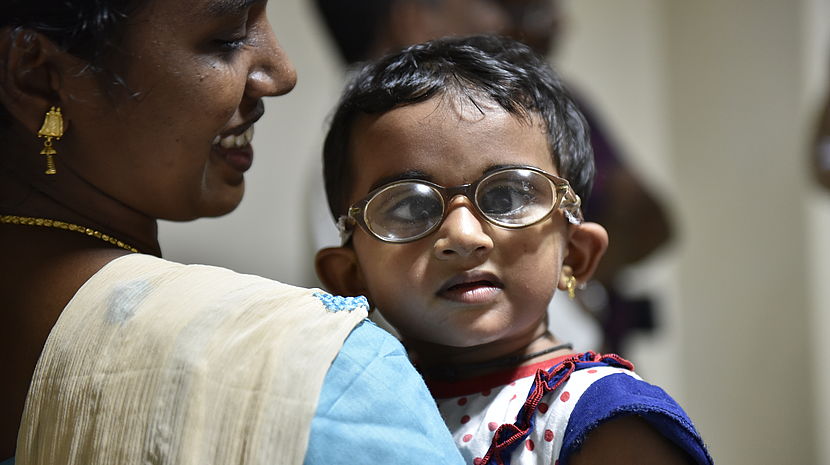18.11.2015 Agenda 2030: a look back and looking ahead

Now that the 2030 Agenda for Sustainable Development has been adopted (on 25 September), it is good to reflect and look back on the process and look ahead to the next steps, particularly in the context of the inclusion of persons with disabilities.
Agenda 2030 versus the SDGs
First, I’d like to clarify Agenda 2030 versus the Sustainable Development Goals (SDGs). Agenda 2030 – adopted by the UN General Assembly in September – is a substantive 35-page document containing five major sections (one of which includes the SDGs and targets). The sections of Agenda 2030 include: (1) Preamble, (2) Declaration, (3) Sustainable Development Goals and targets, (4) Means of implementation and the Global Partnership, and (5) Follow-up and review. All the components are important, as they are interlinked, yet the SDGs are the main tool for monitoring and implementation, and are particularly important at the national and regional levels. Additionally, the SDGs are important for persons with disabilities as they contain seven explicit references to persons with disabilities.
The SDGs versus the MDGs
The SDGs build on the Millennium Development Goals (MDGs), the eight goals agreed in 2000 to end extreme poverty by 2015. The MDGs have had a tremendous effect on the collaboration and prioritization of development work in developing countries over the last 15 years. Yet, persons with disabilities were not referenced in the MDGs and consequently excluded from many development programs and funding streams. The SDGs and inclusion of persons with disabilities now provide an avenue for disability-inclusive development
| Millennium Development Goals (MDGs) | Sustainable Development Goals (SDGs) |
| Adopted in 2000 and end in 2015 | Adopted in 2015 and end in 2030 |
| Focus on developing countries | Focus on all countries |
| To reduce extreme poverty | To eradicate poverty in all its forms of sustainable development: economic (prosperity), social (people), and environmental (planet) |
| 8 goals and 18 targets with 48 indicators | 17 goals and 169 targets with 224 proposed indicators |
| No references to persons with disabilities | 7 references in SDGs: education (2), employment, reducing inequalities, inclusive cities (2), disaggregation of data by disability [11 in Agenda 2030; 5 in indicators] |
Looking back
The road to Agenda 2030 began in 2012 at the UN Conference on Sustainable Development (Rio+20) in Brazil in which one of the outcomes was an agreement by Member States to create a process to develop a set of sustainable development goals (SDGs). Subsequently, on January 22, 2013 the UN General Assembly called for the establishment of the Open Working Group by decision 67/555. The 30-member Open Working Group on Sustainable Development Goals (OWG) was tasked with preparing a proposal on the SDGs. Importantly the OWG opened the doors for civil society participation at an unprecedented level.
The OWG sessions ran from March 2013 until July 2014. The early sessions (March to June 2013) covered assessment and knowledge building, and following (November 2013 to February 2014), thematic discussions took place. The final sessions (March to July 2014) centered on debate, discussion, and finalization of the OWG report. The Report of the OWG was agreed by acclamation on July 19, 2014, which contained the SDGs.
Following the lengthy OWG process, the post-2015 intergovernmental negotiations took place from January 19 to August 2, 2015 with all Member States and thus more comprehensive. The SDGs were not re-opened for negotiations. On August 2, 2015 “Transforming Our World: The 2030 Agenda for Sustainable Development” was agreed by consensus by Member States, this document, with minor changes, became the final document (Agenda 2030) officially adopted in September.
Looking ahead
Positively, persons with disabilities are strongly included in Agenda 2030 with 11 references, seven of which are in the SDGs. Read here for details. Currently, persons with disabilities are also included in four proposed global indicators: (1) Poverty Eradication Indicator 1.3.1, (2) Employment Indicator 8.5.2, (3) Education Indicator 4.5.1, and (4) Peaceful and Inclusive Societies Indicator 16.7.1. Furthermore, the chapeau (introduction) of the final IAEG Report will contain statement on disaggregation of data that includes disability: “SDG indicators should be disaggregated where relevant by income, gender, age, race, ethnicity, migratory status, disability and geographic location, or other characteristics, in accordance with the Fundamental Principles of Official Statistics.” For additional details, read more here.
Now the focus of implementation must turn to national and regional contexts. Ministries and government will begin to focus on and implement the SDGs, especially those they consider national priority areas. Consequently, to ensure that persons with disabilities are included in this process, it is important to:
- Push for the disaggregation of data by disability (in line with international standards) in national surveys to be used for the implementation and monitoring of Agenda 2030.
- Create linkages between implementation and monitoring of Agenda 2030 in the global, regional, national, and local contexts linked to the UN Convention on the Rights of Persons with Disabilities (UNCRPD). This is key as the UNCRPD is legally binding and Agenda 2030 is voluntary.
- Support DPOs and persons with disabilities as leaders and active participants in implementation and monitoring.
- Identify key strategic partners for lobbying local and national governments.
- Work as a networks, coalitions, and alliances with a unified message.
It is time to learn from our partners at regional, national, and local levels, as Agenda 2030 now will center on these areas. We must link the global processes to all levels and ensure that information is shared both ways.
Stay tuned in the next months for updates on the roadmap of the global implementation of Agenda 2030.
Related Blogs
2030 Agenda for Sustainable Development is officially adopted!
Agenda 2030 and Persons with Disabilities: A Closer Look